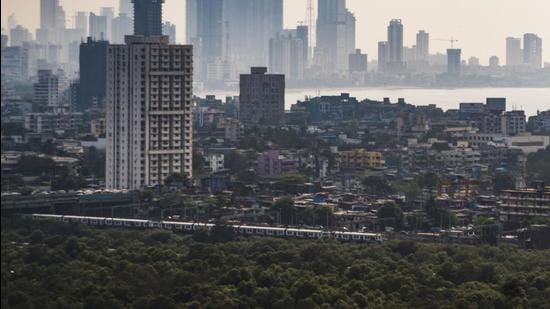Mumbai’s natural carbon sinks inadequate to offset greenhouse emissions
Mumbai’s natural carbon sinks are estimated to have a combined carbon sequestration potential of about 64,000 metric tonnes per year, whereas the estimated carbon footprint of the city stood at 34.4 million tonnes in 2019.
The city’s mangroves, wetlands and urban greenery outside of protected areas forest are estimated to have a combined carbon sequestration potential of about 64,000 metric tonnes (MT) per year, according to data revealed during the fifth round of public consultations for the civic body’s upcoming climate action plan (CAP) for Mumbai. The public consultation, which dealt with the topic of urban greening & biodiversity, was hosted by the World Resources Institute (India).

This is, however, only a fraction of the city’s annual carbon footprint. The annual carbon footprint for 2019 was estimated to be 34.3 million tonnes of carbon dioxide equivalent (tCO2Eq) emissions, as per a greenhouse gas inventory prepared by WRI (India) last month.
HT had, on August 27, reported that a staggering 71% of the city’s greenhouse gas (GHG) emissions can be attributed to the energy sector, followed by the transport sector which contributes 24% of Mumbai’s total GHG emissions.
“Even if you take into account the added carbon sequestration potential of the Arabian Sea, Thane Creek and protected areas such as Sanjay Gandhi National Park and Aarey, the city is still ill-equipped to offset the majority of its emissions. One hopes that the upcoming climate action plan will be able to address this to a degree; but so far there has been no indication as to what the reduction targets will be and how they will achieve this insurmountable task,” said Stalin D, director of NGO Vanashakti, and one of the invitees who spoke at Wednesday’s public consultation.
A presentation shared by WRI (India) during Wednesday’s webinar revealed that the Mumbai’s mangroves and wetlands sequester about 42,139MT carbon annually, followed by urban greenery across the city’s 24 wards, which is estimated to sequester about 22,490MT carbon annually. “These are just estimates. The actual sequestration potential is likely to differ. To calculate the offset potential for urban greenery, we have used remote sensing data as we did not have the civic body’s tree census numbers available to us,” said Lubaina Rangwala, associate director, WRI (India) Ross Center for Sustainable Cities.
Of the 24 broad localities in the city that were analysed as part of WRI (India)’s assessment, Borivli was found to have the highest carbon sequestration potential by virtue of being the most densely green area with over 2,000 acres of land covered by trees — each acre is estimated to capture about 1.35MT carbon per year. This is followed by Goregaon and Chembur, which have 1,500 to 2,000 acres of land covered in trees. Southern localities including Byculla, Grant Road, Marine Lines, Colaba and Sandhurst Road fared most poorly on this index and were found to have the least tree cover in the city.
Debi Goenka, executive trustee of the Conservation Action Trust and another invitee who spoke at the public consultation, however, criticised these numbers, saying, “The entire approach to the way these projections are being made is questionable because they are entirely theoretical and not rooted in any real ground truthing exercise. They have not been correlated with any verifiable information. For example, why has the civic body’s tree census not been shared with WRI for conducting the urban greenery assessment? A remote sensing exercise can be done with just a laptop, internet and working knowledge of GIS software. Where is the real world application in all this?”



